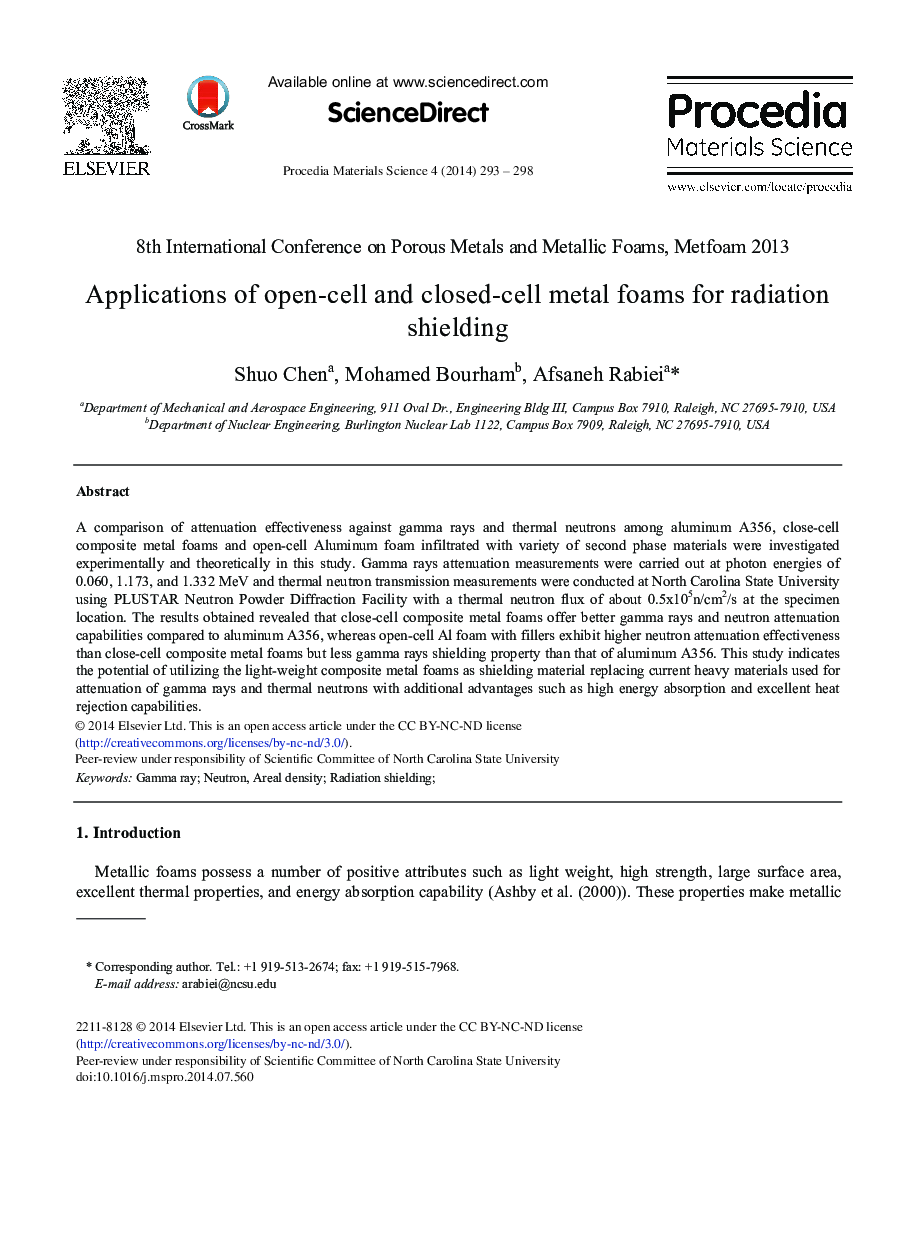| Article ID | Journal | Published Year | Pages | File Type |
|---|---|---|---|---|
| 1634724 | Procedia Materials Science | 2014 | 6 Pages |
A comparison of attenuation effectiveness against gamma rays and thermal neutrons among aluminum A356, close-cell composite metal foams and open-cell Aluminum foam infiltrated with variety of second phase materials were investigated experimentally and theoretically in this study. Gamma rays attenuation measurements were carried out at photon energies of 0.060, 1.173, and 1.332 MeV and thermal neutron transmission measurements were conducted at North Carolina State University using PLUSTAR Neutron Powder Diffraction Facility with a thermal neutron flux of about 0.5x105n/cm2/s at the specimen location. The results obtained revealed that close-cell composite metal foams offer better gamma rays and neutron attenuation capabilities compared to aluminum A356, whereas open-cell Al foam with fillers exhibit higher neutron attenuation effectiveness than close-cell composite metal foams but less gamma rays shielding property than that of aluminum A356. This study indicates the potential of utilizing the light-weight composite metal foams as shielding material replacing current heavy materials used for attenuation of gamma rays and thermal neutrons with additional advantages such as high energy absorption and excellent heat rejection capabilities.
